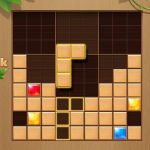Introduction
Badminton Court Size: Badminton, a sport known for its agility and precision, is played on a court that adheres to specific dimensions and layout to ensure a fair and competitive game. Understanding the precise measurements and design of a badminton court is crucial for players, coaches, and enthusiasts alike, as it impacts gameplay, strategy, and overall performance. This blog post provides an in-depth exploration of badminton court size and dimensions, offering insights into its importance, standard measurements, and the implications of these specifications on the game.
The Importance Of Badminton Court
Badminton Court Size: The dimensions of a badminton court are meticulously designed to support the fast-paced nature of the game while providing a balanced playing field for both singles and doubles matches. These measurements are established by the Badminton World Federation (BWF) and are crucial for maintaining consistency and fairness in competitive play. A well-defined court not only ensures that players can perform their best but also enhances the overall experience of the sport, making it enjoyable and challenging.
Accurate court dimensions are essential for several reasons. Firstly, they define the boundaries within which the game is played, preventing any ambiguity regarding whether a shuttlecock is in or out of play. Secondly, the size and layout of the court affect the strategies employed by players. For example, the dimensions influence the angles and distances players must cover, which in turn impacts their positioning and movement on the court. Finally, the correct dimensions contribute to the safety of the players, as they provide ample space to execute shots and maneuver around the court without obstruction.

Standard Measurements For Badminton
Badminton Court Size: According to international regulations, a standard badminton court measures 13.4 meters in length and 6.1 meters in width. These dimensions are consistent across both indoor and outdoor settings, though the majority of competitive play occurs indoors due to the controlled environment and absence of external factors like wind. A net, placed at the center of the court, divides the court into two halves.
The length of the court is crucial for accommodating the different types of play. For singles matches, the court length is maintained at 13.4 meters, while for doubles matches, the width of the court is extended to 6.1 meters. This adjustment allows for a broader playing area, accommodating the additional players and increasing the strategic complexity of doubles games.
Badminton Court Size The court’s width, at 6.1 meters, is designed to provide enough space for players to execute a variety of shots and movements. This width ensures that players have room to cover the court effectively while also allowing for the dynamic rallies that characterize high-level badminton matches. The width is consistent across both singles and doubles play, although the overall court area is slightly larger for doubles matches due to the extended width.
Badminton Court Size: Court Layout And Markings
In addition to the overall dimensions, the badminton court features several markings that define specific areas and play zones. These markings are essential for regulating gameplay and ensuring that players adhere to the rules of the sport. The court is divided into various sections, each with its own significance and impact on the game.
The net line is one of the most critical markings on the court. It runs across the center of the court, dividing it into two equal halves. The height of the net is regulated to be 1.55 meters at the center and 1.524 meters at the posts. This height ensures that the shuttlecock must be hit over the net, requiring players to demonstrate both precision and skill in their shots.
Badminton Court Size: Another important marking is the service line, which is located 1.98 meters from the net on each side of the court. The service line defines the area within which the shuttlecock must land during a serve. For singles play, the service area is narrower, while for doubles, it extends to the full width of the court. This adjustment reflects the difference in court usage between singles and doubles matches and influences the serving strategies employed by players.
The court also features baseline markings, which define the boundary of the playing area at the back of the court. For singles play, the baseline is positioned 6.1 meters from the net, while for doubles play, it is set at the same distance but includes the extended width of the court. The baselines are crucial for determining whether a shot is in or out of play, as the shuttlecock must land within these boundaries to be considered valid.
Additionally, the court includes sidelines that run perpendicular to the net, marking the sides of the court. For singles play, the sidelines are positioned 5.18 meters from the center of the court, while for doubles play, they extend to 6.1 meters. These sidelines help define the width of the court and are integral to ensuring that players remain within the designated playing area.

Impact Of Badminton Court Size On Gameplay
Badminton Court Size: The dimensions of a badminton court significantly impact the dynamics of the game. The length and width of the court determine the range of movement and positioning required by players. In singles matches, players must cover a longer distance along the length of the court, which emphasizes endurance and speed. The narrower width of the court in singles play requires players to be adept at utilizing the full length and angling their shots effectively.
In contrast, doubles matches feature a wider court, which introduces new strategic elements. The increased width allows for more intricate shot placement and teamwork, as players can cover different areas of the court and coordinate their movements. The broader court also necessitates effective communication between partners and strategic positioning to cover potential shots from opponents.
The height of the net and the service lines further influence gameplay by dictating the trajectory of serves and returns. Players must adjust their shots to account for the net’s height, ensuring that their serves clear the net and land within the designated service area. The net height and service line placement contribute to the strategic depth of the game, as players must balance power and precision in their shots.
The Role Of Maintenance And Condition
Maintaining the correct dimensions and condition of the badminton court is essential for ensuring fair play and optimal performance. Regular upkeep is necessary to preserve the integrity of the court and prevent any discrepancies that could affect gameplay. This includes ensuring that the court markings remain clear and visible, and that the surface is free from damage or irregularities.
Badminton Court Size, The surface of the court should be smooth and level, with appropriate cushioning to reduce the risk of injury. Different types of court surfaces, such as wood, synthetic materials, or rubberized flooring, may be used depending on the venue and the level of play. Each surface type has its own characteristics, affecting the speed and bounce of the shuttlecock and the players’ movement.
The net and its supporting posts must also be properly maintained to ensure that they meet the required height and tension. A correctly positioned net is crucial for maintaining the fairness of the game, as any deviation from the standard height can impact the trajectory of the shuttlecock and the overall gameplay experience.

Conclusion
Badminton Court Size, The dimensions and layout of a badminton court play a fundamental role in shaping the gameplay and experience of the sport. The standard measurements, including the length, width, and markings of the court, are designed to provide a balanced and challenging environment for players. These dimensions influence the strategies, movement, and overall dynamics of the game, making them essential for competitive play.
Accurate court dimensions ensure that the game remains fair and enjoyable, allowing players to showcase their skills and tactics within a well-defined playing area. Maintaining court dimensions and conditions is also crucial for preserving the integrity of the sport and providing a consistent experience for players.
Badminton Court Size, Whether playing in a casual setting or competing in a high-stakes tournament, understanding the size and layout of the badminton court enhances players’ appreciation of the sport and their ability to perform at their best. The precise measurements and thoughtful design of the court contribute to the rich and dynamic nature of badminton, making it a sport that continues to captivate and inspire players around the world.










